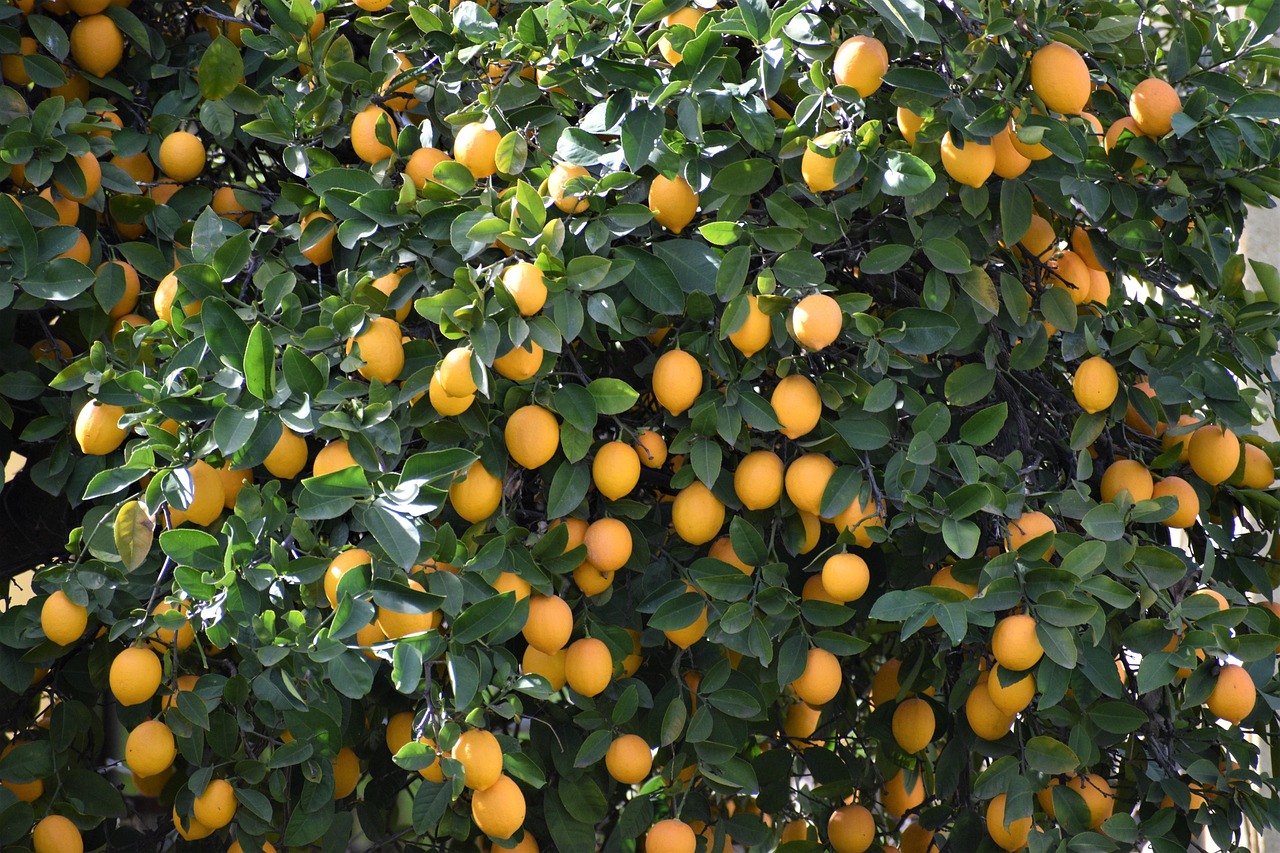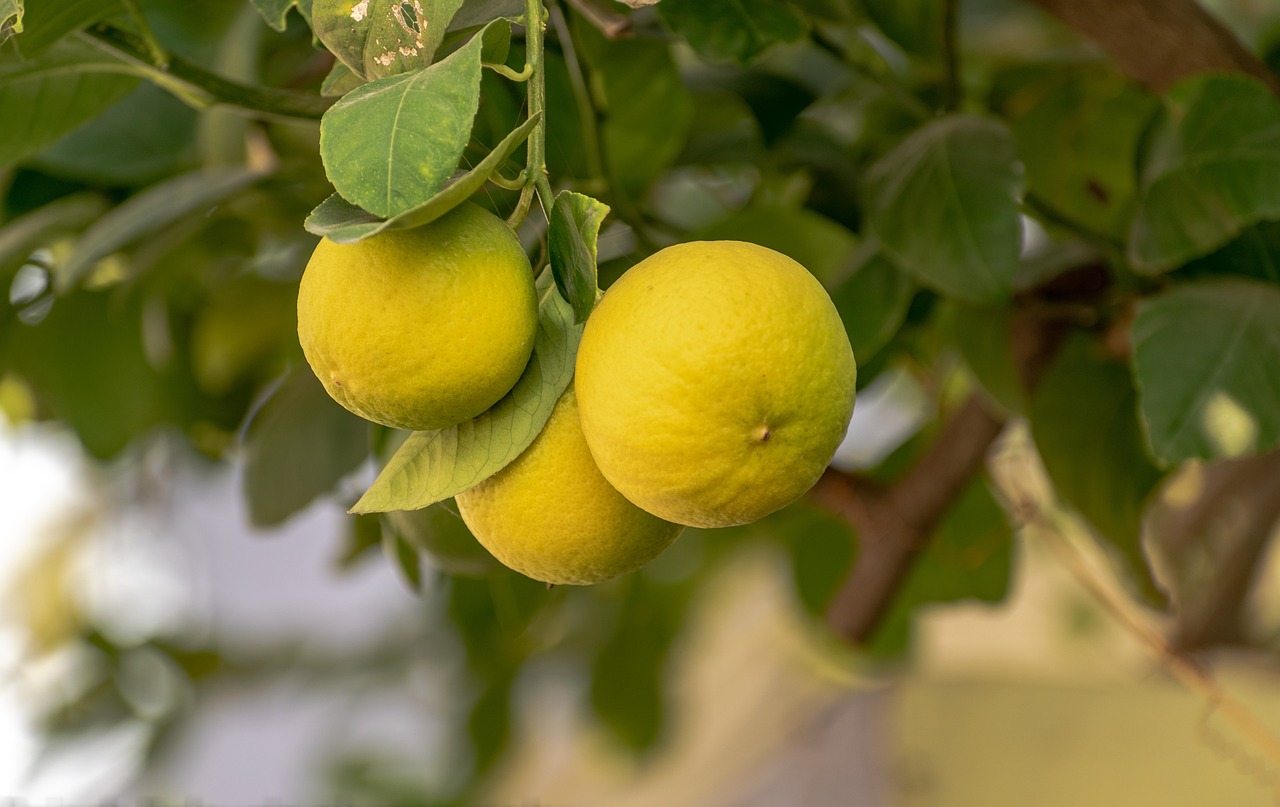Lemon trees typically take about three to five years to produce fruit when grown from seed. However, the growth rate can vary based on factors such as the tree’s environment, care, and specific lemon variety.
Lemon Tree Growth Overview
Lemon trees (Citrus limon) are popular for their fragrant blossoms and tart, juicy fruit. Growing a lemon tree from seed can be a rewarding experience. The process takes time and patience, with several stages from germination to fruit production. Understanding the growth rate is essential for gardeners planning to cultivate these trees.

The growth rate of lemon trees varies significantly depending on several factors, including climate, soil quality, and care practices. When grown in optimal conditions, lemon seeds can germinate within a few weeks. After germination, the seedling stage follows, which is crucial for establishing a healthy root system.
Factors Influencing Growth Rate
Several factors can affect the growth rate of lemon trees. These include:
- Climate: Lemon trees thrive in warm, sunny climates. They prefer temperatures between 70°F and 100°F.
- Soil Quality: Well-draining soil rich in organic matter promotes faster growth.
- Watering: Consistent moisture is essential for young trees. However, overwatering can lead to root rot.
- Fertilization: Regular feeding with a balanced fertilizer supports healthy growth.
- Sunlight: Lemon trees require at least eight hours of sunlight daily for optimal growth.
Growth Stages of Lemon Trees
The growth of lemon trees can be broken down into key stages:

- Seed Germination: This stage lasts about 2-3 weeks. Seedlings will emerge from the soil during this time.
- Seedling Stage: Lasting approximately 6-12 months, seedlings should be kept in a warm area with plenty of light.
- Juvenile Stage: After about a year, the tree enters this stage and will focus on leaf growth and root establishment.
- Mature Stage: After 3-5 years, the tree will start producing flowers and fruit.
Growth Rate Comparison Table
| Stage | Estimated Time Frame | Description |
|---|---|---|
| Seed Germination | 2-3 weeks | The seed begins to sprout and develops small roots. |
| Seedling | 6-12 months | The young plant grows leaves and strengthens its root system. |
| Juvenile | 1-3 years | The tree focuses on growing larger and stronger without fruiting. |
| Mature | 3-5 years | The tree produces its first flowers and fruit. |
In summary, while growing a lemon tree from seed to fruiting takes time, understanding the various stages and factors that influence growth can help gardeners optimize their cultivation process. By providing favorable conditions and proper care, growers can enjoy their first lemons within just a few years of planting the seed.
The joy of nurturing a lemon tree from a tiny seed to a flourishing plant is unmatched. As the tree matures, it not only becomes a source of fresh lemons but also adds beauty to any garden or indoor space.
Ideal Conditions for Growing Lemon Trees
To ensure the best growth rate for lemon trees, it is essential to provide them with ideal growing conditions. These trees have specific requirements that influence their health, growth, and fruit production. Understanding these conditions will help gardeners create an environment conducive to robust growth.

Temperature Requirements
Lemon trees thrive in warm climates. They are sensitive to cold, and temperatures below 50°F can harm young trees. The following temperature ranges are most favorable:
- Optimal Growth: 70°F to 100°F.
- Minimum Survival Temperature: 20°F. Trees may suffer damage below this.
- Ideal Winter Temperature: Above 50°F, as this helps prevent frost damage.
Soil Composition and Drainage
The type of soil used is crucial for lemon tree growth. Well-draining soil prevents water from accumulating around the roots, which can lead to rot. Here are the key aspects of suitable soil:
- pH Level: Lemon trees prefer slightly acidic soil with a pH between 5.5 and 6.5.
- Soil Type: Sandy loam is ideal, as it combines good drainage with nutrient retention.
- Organic Matter: Incorporating compost or well-rotted manure can improve soil structure and fertility.
Watering Practices
Watering lemon trees correctly is vital for their growth. Young trees require regular moisture, but established trees can tolerate drier conditions. Here are some watering guidelines:

- Frequency: Water young trees deeply once a week. Adjust based on rainfall and temperature.
- Signs of Underwatering: Wilting leaves and dry soil indicate the need for more water.
- Signs of Overwatering: Yellowing leaves and root rot symptoms suggest too much moisture.
Nutrition for Healthy Growth
Nutrient management plays a significant role in the growth rate of lemon trees. Proper fertilization ensures that the tree receives the essential elements needed for development.
Essential Nutrients
Lemon trees require various nutrients for optimal growth, including:
- Nitrogen: Supports leaf growth and overall tree vigor.
- Phosphorus: Important for root development and flower formation.
- Potassium: Enhances fruit quality and disease resistance.
Fertilization Schedule
A fertilization schedule helps maintain nutrient levels in the soil:
- Early Spring: Apply a balanced fertilizer or organic compost as new growth begins.
- Mid-Summer: Fertilize again to support fruit development.
- Fall: Reduce feeding as the tree prepares for dormancy.
Pest and Disease Management
Lemon trees can be susceptible to various pests and diseases that can hinder their growth rate. Identifying issues early is key to maintaining a healthy tree.
Common Pests
The following pests are often seen on lemon trees:
- Aphids: Small insects that can weaken the plant by sucking sap.
- Spider Mites: Tiny pests that thrive in dry conditions, causing leaf damage.
- Citrus Leaf Miner: Larvae that can damage young leaves and affect growth.
Disease Control
Lemon trees may also encounter diseases such as:
- Citrus Canker: A bacterial disease that causes lesions on leaves and stems.
- Root Rot: Often caused by overwatering, affecting root health.
- Powdery Mildew: A fungal disease that appears as white powder on leaves.
Regular monitoring and prompt action can help manage these threats and promote healthy growth in lemon trees.
Harvesting and Caring for Mature Lemon Trees
Once a lemon tree reaches maturity and begins to produce fruit, proper care becomes essential for maximizing yield and ensuring the health of the tree. Understanding the best practices for harvesting and ongoing maintenance can significantly impact the tree’s productivity.
Identifying Ripe Lemons
Knowing when to harvest lemons is crucial for enjoying their best flavor. Ripe lemons will have certain characteristics:
- Color: Ripe lemons should be bright yellow, without green patches.
- Texture: The skin should be slightly firm to the touch, indicating juiciness.
- Size: Lemons typically reach their full size before ripening. A mature lemon is usually 2 to 4 inches in diameter.
- Aroma: Ripe lemons emit a strong citrus scent, a sign of their readiness for harvest.
Harvesting Techniques
Proper harvesting techniques can prevent damage to both the fruit and the tree:
- Use Clean Tools: Always use clean, sharp shears or scissors to make cuts.
- Avoid Pulling: Instead of pulling, cut the stem just above the lemon to prevent tearing the skin.
- Handle with Care: Gently place harvested lemons in a basket to avoid bruising.
Post-Harvest Care
After harvesting, it is important to care for the tree to ensure continued health and productivity:
- Watering: Continue regular watering but avoid overwatering, especially after fruiting.
- Fertilization: Provide a balanced fertilizer post-harvest to support new growth.
- Pest Management: Check for pests regularly, as they may be attracted to fruiting trees.
- Pruning: Lightly prune back any dead or damaged branches to encourage healthy growth.
Common Varieties of Lemon Trees
Different varieties of lemon trees may have unique growth rates and fruit characteristics. Here are some popular types:
| Variety | Description | Growth Rate |
|---|---|---|
| Eureka | This is one of the most common lemon varieties, known for its juicy fruit and thorny branches. | Mature in 3-5 years |
| Lisbon | Similar to the Eureka, Lisbon lemons are also juicy and tart, thriving in many climates. | Mature in 3-5 years |
| Meyer | A hybrid between a lemon and a mandarin, Meyer lemons are sweeter and less acidic. | Mature in 2-3 years |
| Ponderosa | This variety produces large, thick-skinned lemons with a strong flavor. | Mature in 4-6 years |
Choosing the Right Variety for Your Climate
The right variety can make a significant difference in growth success. Consider the following factors when choosing:
- Climate: Some varieties may perform better in specific climates. For example, Meyer lemons thrive in cooler areas.
- Space: Ponderosa trees require more space due to their larger size, while dwarf varieties are suitable for smaller areas.
- Pest Resistance: Some varieties may be more resistant to pests and diseases, making them easier to care for.
The Role of Pollination in Fruit Production
Lemon trees can be self-pollinating, but understanding pollination’s role can enhance fruit set and yield. Here are key points about pollination:
Self-Pollination vs. Cross-Pollination
Lemon trees have both male and female flowers, allowing them to self-pollinate. However, cross-pollination can lead to better fruit production. Consider these aspects:
- Pollen Transfer: Bees and other pollinators assist in transferring pollen between flowers, improving fruit set.
- Flowering Periods: Planting multiple varieties can increase cross-pollination opportunities.
- Indoor versus Outdoor: Indoor lemon trees may require hand pollination if natural pollinators are absent.
Cultivating lemon trees requires attention to detail at every stage of growth. By providing optimal conditions and care throughout their life cycle, gardeners can enjoy abundant harvests of fresh lemons for years to come.
Challenges in Growing Lemon Trees
While growing lemon trees can be a fulfilling experience, certain challenges may arise during their development. Understanding these challenges can help gardeners prepare and overcome potential issues.
Environmental Stressors
Lemon trees are sensitive to their environment. Here are some stressors that can affect their growth:
- Temperature Extremes: Sudden temperature drops or prolonged heat can stress the tree, leading to reduced growth or fruit drop.
- Humidity Levels: Low humidity can cause leaf drop and hinder growth, especially in indoor settings.
- Wind Damage: Strong winds can break branches and damage fruit. Providing windbreaks can help protect the tree.
Pest Infestations
Pests can quickly become a problem if not managed properly. In addition to aphids, spider mites, and citrus leaf miners, here are other pests to be aware of:
- Scale Insects: These pests attach themselves to the tree and suck sap, weakening it over time.
- Whiteflies: These small insects can cause yellowing leaves and stunted growth.
- Caterpillars: Certain caterpillars may feed on leaves, damaging the tree’s foliage.
Fungal Diseases
In addition to the previously mentioned diseases, lemon trees may face other fungal threats:
- Anthracnose: This disease causes dark spots on leaves and fruit, impacting overall health.
- Phytophthora: A root rot disease that thrives in overly wet conditions, causing tree decline.
- Leaf Spot: This condition manifests as spots on leaves, weakening the tree’s ability to photosynthesize.
Companion Planting for Lemon Trees
Companion planting can be beneficial for lemon trees. Certain plants can enhance growth and deter pests. Consider these options:
- Basil: Helps repel pests such as aphids and attracts beneficial insects.
- Nasturtiums: Act as a trap crop for aphids, keeping them away from lemon trees.
- Marigolds: Known to deter nematodes and attract pollinators.
Planting these companions around lemon trees can create a healthier garden ecosystem and improve overall productivity.
Final Thoughts
Growing lemon trees from seed to fruiting is a rewarding journey filled with learning opportunities. Understanding the growth rate, ideal conditions, and care requirements is essential for success. From providing adequate sunlight and water to managing pests and diseases, careful attention leads to bountiful harvests of fresh lemons.
The joy of cultivating your own lemons at home extends beyond mere fruit production. It fosters a connection with nature and enriches your gardening experience. With patience and dedication, anyone can enjoy the benefits of homegrown lemons, enhancing culinary creations, beverages, and even home remedies.
In summary, by investing time in learning about lemon tree growth, gardeners can enjoy not only the fruits of their labor but also the beauty and fragrance these trees bring to their spaces. Whether you’re a novice or an experienced gardener, growing lemon trees can be a delightful addition to your gardening endeavors.
